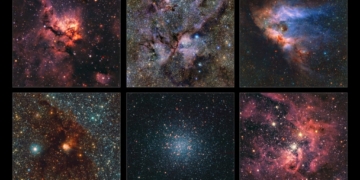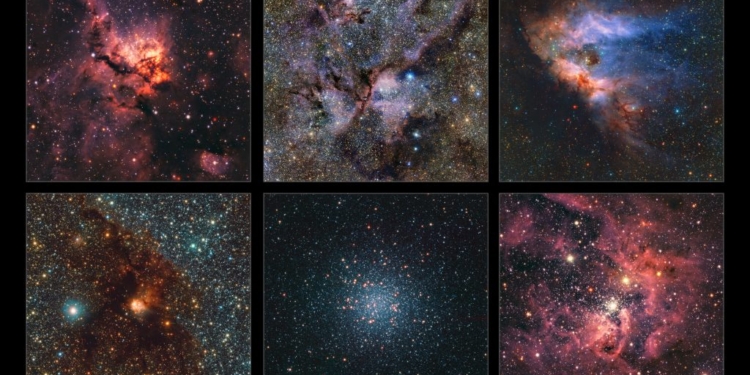
Astronomers have published a gigantic infrared map of the Milky Way containing more than 1.5 billion objects ― the most detailed ever made.
The team monitored the central regions of our galaxy over more than 13 years using the European Southern Observatory’s (ESO) VISTA telescope.
At 500 terabytes of data, this is the largest observational project ever carried out with an ESO telescope.
“We made so many discoveries, we have changed the view of our Galaxy forever,” says Dante Minniti, an astrophysicist at Universidad Andrés Bello in Chile who led the overall project.
The record-breaking map comprises 200,000 images taken by ESO’s VISTA ― the Visible and Infrared Survey Telescope for Astronomy.

At ESO’s Paranal Observatory in Chile, the telescope’s main purpose is to map large sky areas.
The team used VISTA’s infrared camera, VIRCAM, which can peer through the dust and gas that permeates our galaxy. It can, therefore, see the radiation from the Milky Way’s most hidden places, opening a unique window onto our galactic surroundings.
This gigantic dataset covers an area of the sky equivalent to 8,600 full moons and contains about ten times more objects than a previous map released by the same team in 2012.
It includes newborn stars, which are often embedded in dusty cocoons, and globular clusters, dense groups of millions of the Milky Way’s oldest stars.

Observing infrared light means VISTA can also spot very cold objects, which glow at these wavelengths, like brown dwarfs (‘failed’ stars that do not have sustained nuclear fusion) or free-floating planets that don’t orbit a star.
The observations began in 2010 and ended in the first half of 2023, spanning a total of 420 nights.
“The project was a monumental effort, made possible because we were surrounded by a great team,” says Roberto Saito, an astrophysicist at the Universidade Federal de Santa Catarina in Brazil and lead author of the paper published Thursday (26 Sep) in Astronomy & Astrophysics on the completion of the project.
With the surveys now complete, the scientific exploration of the gathered data will continue for decades to come.
Produced in association with SWNS Talker


























 Continue with Google
Continue with Google